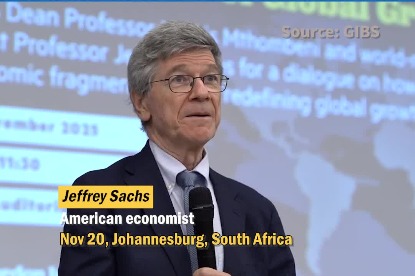Nation puts innovation front and center

China's 15th Five-Year Plan (2026-30) will land at a defining moment in the nation's modern history. Four decades of rapid industrialization have transformed the country into the world's manufacturing powerhouse, but the easy gains of catchup growth are gone.
Productivity is relatively slowing, demographics are aging, and the global environment has turned more challenging. Beijing's answer, not surprisingly, is a new guiding plan — this time with an unmistakable theme: Innovation will be and must be a new and major engine of the country's modernization drive.
The plan is impressive. It offers a sweeping vision of national rejuvenation grounded in science, technology and human capital. Gone are the days when growth targets and steel output defined success. Today, the metric is "high-quality development", a phrase that signals a shift toward efficiency, originality and sustainability. And to that end, the leadership has fully integrated education, research and talent into a single strategic framework.
The document's guiding language — including a call for coordinated advancement of education, science and human resources — captures a coherent ambition: to make innovation the organizing principle of China's future.
That coherence is one of the plan's greatest strengths. It recognizes that a truly modern economy cannot rely too heavily on imported technologies or borrowed know-how. China's leaders now speak of "new quality productive forces", emphasizing semiconductors, artificial intelligence, quantum computing and advanced manufacturing as core priorities.
While pledging State investment in these fields, the plan encourages the market to "play a decisive role" and supports enterprises in increasing relevant inputs, coupled with reforms to strengthen domestic supply chains and reduce dependence on foreign inputs. This is not simply a reaction to the United States' export controls; it is an assertion of China's technological sovereignty.
Equally significant is the attention to human capital. The master plan for building China into a leading country in education during 2024-35 calls for expanded graduate programs, greater scientific literacy, and stronger training for teachers and researchers. In a nation where GDP expansion was once the most important measure of progress, it is striking to see classrooms, laboratories and doctoral fellowships become central to national strategy.
One must also acknowledge the plan's realism. Its drafters admit that China faces "unprecedented uncertainties". It is also true that without strong coordination, the shift to an innovation-driven economy could easily lose coherence. The problem is that coordination and creativity do not always easily mix. Whether that balancing act can hold will determine much of China's trajectory over the next decade.
Moreover, coherence does not equal creativity. China's system excels at mobilization, but still faces challenges with managing creativity. The new plan relies heavily on the playbook of State direction, industrial policy and national champions. That formula is effective in building infrastructure and manufacturing strength, but is inadequate in helping generate major innovation breakthroughs. The country still needs to make more efforts to cultivate environments that tolerate failure, encourage debate and reward curiosity.
The challenge is even sharper in education. China produces vast numbers of STEM (science, technology, engineering and mathematics) graduates and PhDs, but the education system still needs to be more inclusive so that students and scholars can feel encouraged to focus on genuine intellectual exploration. More incentives should be directed toward basic research, even without actually achieving significant breakthroughs.
Another tension lies in the pursuit of technological self-reliance. The drive to secure domestic capabilities is understandable. Export restrictions and geopolitical rivalry have exposed painful vulnerabilities, but self-reliance must be prevented from shading into insular thinking. China's scientific rise since the 1980s has been fueled by openness — students studying abroad, joint laboratories and international collaboration. Necessary academic exchanges remain important for China to engage in global knowledge flows and improve its innovation capabilities.
Still, there is ample reason for optimism. For those of us who have watched US-China science and technology relations for decades, the implications are profound. The 15th Five-Year Plan makes clear that innovation is not a peripheral agenda; it is China's new national identity. It also signals that competition and cooperation can and will coexist. The US and its allies will face a China that is simultaneously more capable, more confident and more deliberate about openness. The two systems will need to find shared spaces for collaboration — on climate, health or AI safety, among others.
Ultimately, China's 15th Five-Year Plan is both essential and a work in progress. In its bureaucratic instincts with the creative logic of innovation, the plan could mark China's true arrival as a scientific superpower. The blueprint is bold; the challenge is whether the participants in China's innovation ecosystem can be just as bold.
The author is a nonresident fellow at the Quincy Institute in Washington, DC. He also serves as visiting professor in the Asian and Pacific Studies Institute at Duke University in the US.
The views do not necessarily reflect those of China Daily.
































